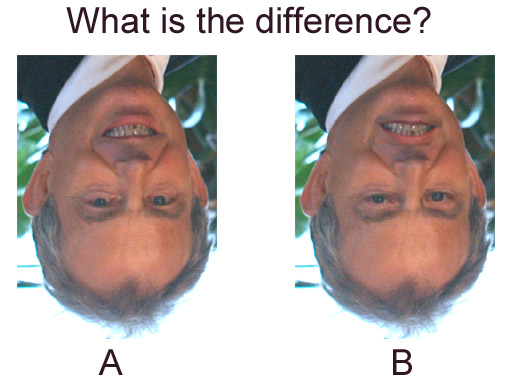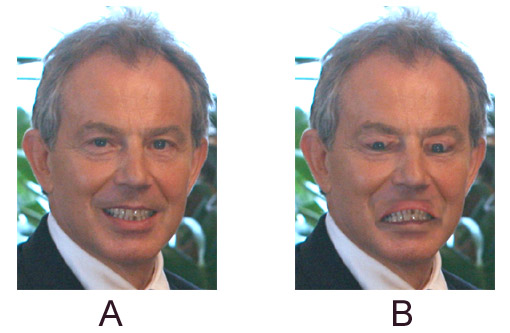Face Recognition
Introduction
If you are shown a face you might be able to give it a name straight away, but other times you know things about the person yet can't name them. The following terms are used to describe varying degrees of recognition:
Face recognition this is when you know you've seen the face before.
Face recall trying to remember details about a face.
Face identification Looking at a face and knowing who it is.
But for the purposes of Psychology and especially the law, we need to know how faces are recognized; and once we know this then eyewitness accounts of what a suspect looked like could be improved.
Feature Analysis Theory
This is the first theory of face recognition; as it's name suggests it says you look at individual parts or features (nose, mouth, hair) of the face in recognizing it. It is known as a bottom-up theory because you look at details first and then the whole picture.
Below is the key study for this theory, it is by Shepherd, Davies and Ellis (1981).
| Aim | To see how features are used when recalling unfamiliar faces. |
|---|---|
| Method | Participants were breifly shown faces of people they had never seen before, and then had to describe the face. |
| Results | The features most often recalled were (from most to least frequent): hair, eyes, nose, mouth, eyebrows, chin and forehead. |
| Conclusion | Faces of unfamiliar people tend to be recalled using the face's main features; this suggests we view faces as described in feature analysis theory. |
| Evaluation | Because of the nature of the experiment, that participants were asked to describe a face, would make them more likely to describe individual features, however, face recognition could work differently. |
Holistic Form
This theory says we look at the face as a whole (i.e. spacing, overall shape), including stored information related to it, for example emotion (which is important when recognizing a friend or relative). It is said to be a top-down theory because you look at the bigger picture first.
Our key study for this theory is by Young and Hay.
| Aim | Find out how important layout of faces is when processing them. |
|---|---|
| Method | Pictures of famous faces where cut in half horizontally. Participants had to first identify the face from one half. And in the second condition the two halves were put together to make a composite. |
| Results | It took longer to recognise the composites than the halves. |
| Conclusion | In the composite condition a new face composition was formed, thus making it more difficult to identify the two seperate people. |
| Evaluation | There is always a problem with using 'famous' faces, since a face that is famous to one person may not be to another. |
Here a famous experiment called the Thatcher illusion has been recreated, but using another former Prime Minister: Tony Blair. What differences do you notice between A and B

However, when you look at the images the correct way up; it becomes much more obvious what the difference is.

If you don't believe they are the same picture then just turn your head upside down! This suggests that faces are infact viewed holistically because you do not detect that the eyes and mouth are inverted the first time around.
Comparison
The general opinion in Psychology nowadays is that the holistic form theory is the most appropriate. Since it takes account, not only for how we look at the face physically, but also the emotional response. This makes sense when looking at face recognition disorders.
Capgras Syndrome is caused by brain damage and sufferers recognise a familiar face but have no emotional response to it. This can make them believe their relatives are imposters. Indeed Blount (1986) cites a case when a man slit is father's throat because he was convinced he was a robot and was looking for the wires.
So in conclusion, and using evidence like the Thatcher illusion, Thompson (1980). We can say that there is a greater amount of evidence to support Holistic Form Theory as apposed to feature analysis.
